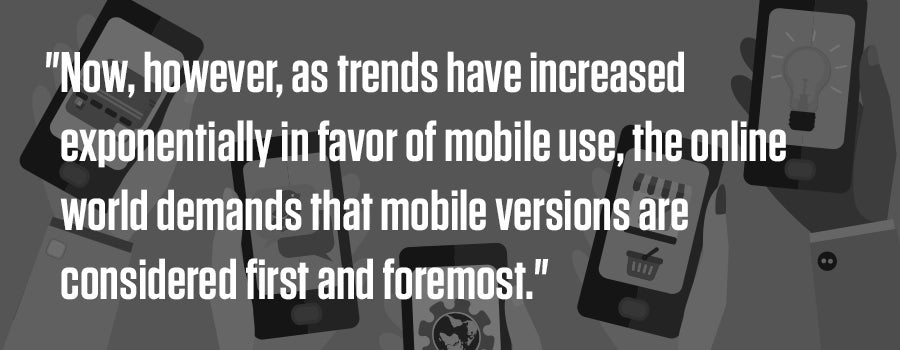Life – for many – has changed irrevocably with the rise of mobile devices. From the convenience of ordering meals through food delivery platforms to accessing an incredibly wide range of services while out and about, more people rely on mobile-friendly website design than ever before. In fact, in some regions, consumers use their phones to access the internet almost exclusively. Such progressive and widespread growth in mobile consumption has led to a fundamental shift in website design known as mobile-first indexing.
What is mobile-first indexing? Essentially, it is a method used by Google and other search engines to index a website’s content and determine search result rankings based on the mobile version of the site. The aim is to ultimately improve the user experience (UX) for mobile users by delivering search results from the most responsive and mobile-friendly websites.
In the past, the website’s desktop version was used by search engines as they crawled through each page analyzing content and establishing worth based on their complex algorithms. Now, however, as trends have increased exponentially in favor of mobile use, the online world demands that mobile versions are considered first and foremost.
From an SEO standpoint, the shift to mobile-first indexing is very significant as websites must be altered to accommodate these changing standards. For any site with a less-than-stellar mobile UX, it could lead to poor search result performance. It might even prevent the site from appearing in search results entirely. Because of this, implementing mobile-first indexing best practices ASAP is essential.

A great place to get started is by running a quick audit. There are free or paid versions available that crawl the site with a mobile bot in the same manner as Google. These audits provide constructive insight on errors potentially holding it back from ranking high and other important oversights across affected pages.
The primary guideline to follow when optimizing for mobile-first indexing is adopting a responsive web design. Doing so ensures the site is capable of dynamically adjusting its layout and content to fit the expectations of users across devices. By automatically adapting to different screen sizes and orientations, rearranging certain design elements and so on, responsive web design not only makes the site work great for the user, but it helps it look great as well. This is key to a seamless, positive UX.
Crawlability is also vital. A crawlable website means search engines are able to find pages, run code and assess content easily. This makes indexing and, therefore, ranking the mobile site more straightforward. Other best practices include accelerating page loading speed, creating mobile-friendly content and optimizing metadata, such as meta titles, descriptions and tags.
As the online landscape continuously evolves, businesses must rise to the challenge of staying as up to date as possible. By embracing mobile-first indexing sooner, rather than later, marketers and web developers can better engage their target audiences and position their websites favorably within our ultra-competitive digital space.
